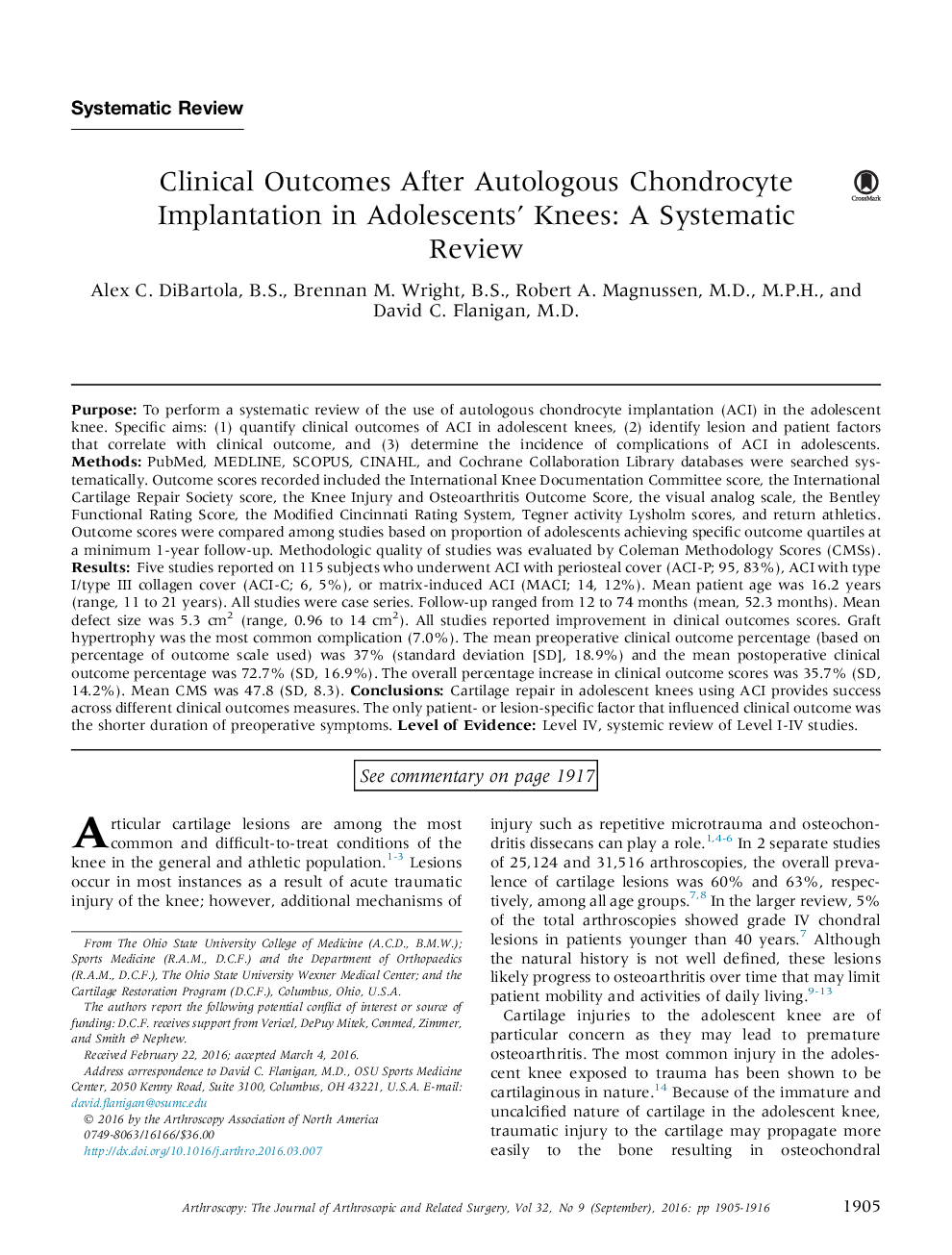| Article ID | Journal | Published Year | Pages | File Type |
|---|---|---|---|---|
| 4041756 | Arthroscopy: The Journal of Arthroscopic & Related Surgery | 2016 | 12 Pages |
PurposeTo perform a systematic review of the use of autologous chondrocyte implantation (ACI) in the adolescent knee. Specific aims: (1) quantify clinical outcomes of ACI in adolescent knees, (2) identify lesion and patient factors that correlate with clinical outcome, and (3) determine the incidence of complications of ACI in adolescents.MethodsPubMed, MEDLINE, SCOPUS, CINAHL, and Cochrane Collaboration Library databases were searched systematically. Outcome scores recorded included the International Knee Documentation Committee score, the International Cartilage Repair Society score, the Knee Injury and Osteoarthritis Outcome Score, the visual analog scale, the Bentley Functional Rating Score, the Modified Cincinnati Rating System, Tegner activity Lysholm scores, and return athletics. Outcome scores were compared among studies based on proportion of adolescents achieving specific outcome quartiles at a minimum 1-year follow-up. Methodologic quality of studies was evaluated by Coleman Methodology Scores (CMSs).ResultsFive studies reported on 115 subjects who underwent ACI with periosteal cover (ACI-P; 95, 83%), ACI with type I/type III collagen cover (ACI-C; 6, 5%), or matrix-induced ACI (MACI; 14, 12%). Mean patient age was 16.2 years (range, 11 to 21 years). All studies were case series. Follow-up ranged from 12 to 74 months (mean, 52.3 months). Mean defect size was 5.3 cm2 (range, 0.96 to 14 cm2). All studies reported improvement in clinical outcomes scores. Graft hypertrophy was the most common complication (7.0%). The mean preoperative clinical outcome percentage (based on percentage of outcome scale used) was 37% (standard deviation [SD], 18.9%) and the mean postoperative clinical outcome percentage was 72.7% (SD, 16.9%). The overall percentage increase in clinical outcome scores was 35.7% (SD, 14.2%). Mean CMS was 47.8 (SD, 8.3).ConclusionsCartilage repair in adolescent knees using ACI provides success across different clinical outcomes measures. The only patient- or lesion-specific factor that influenced clinical outcome was the shorter duration of preoperative symptoms.Level of EvidenceLevel IV, systemic review of Level I-IV studies.
